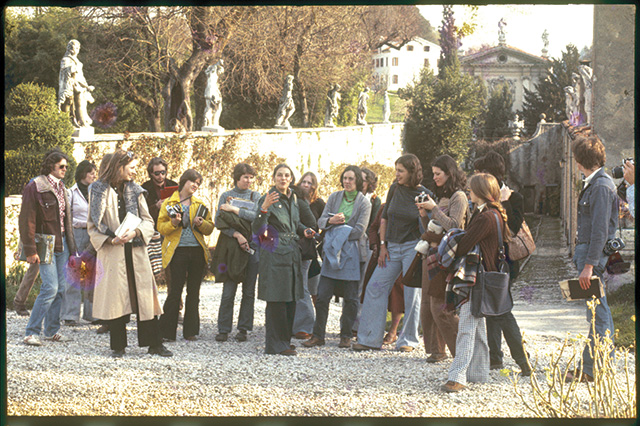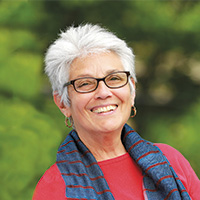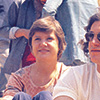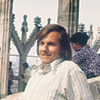Pulteney Street SurveySpring 2019

Italian Art History, Ad hoc
Study abroad at Hobart and William Smith took off informally, or as Professor Emerita of Art History Elena Ciletti says, "by the seat of one's pants."
"It was, I'm happy to say, student generated," Ciletti recalls of that first term abroad. "I was sitting with some students in the little cafe in the basement of Coxe Hall. We had just been in an Italian renaissance art history course, talking about how great these works were, and somebody said, 'Why can't we go to Italy and see these things in person?' I was young and foolish and said, 'Yeah,' and everybody said, 'Yeah, let's do it.' So we did."

The following term, the spring of 1975, she and 29 students spent 10 weeks exploring the art of Venice, Florence and Rome - from the ceiling of the Sistine Chapel to Gianbattista Tiepolo's frescos in the country houses of noble Italian families, where "the luminosity of the air and environment let you see the works in a way that no slide projector on campus could match," Ciletti says.

Susan Albert '75, P'07, P'09 recalls that "it was a pretty wild idea at the time" for students at a residential college like HWS "to take off and leave our dorm rooms and jump on an airplane."
After landing in Europe thousands of miles from home, in a cramped compartment on the overnight train from Luxembourg, Neil Sjoblom '75 remembers wondering "what had I got myself into - but that changed right away when we arrived in Venice."
On that sunny day, disembarking from the waterbus at St. Mark's Square, "seeing the reflections in the canals and the interplay of light on mosaics, all my anxieties disappeared," he says.

Sjoblom, who had already established a photography business in Geneva that he still operates today, drew inspiration from that interplay of color, light and reflection for his independent study that semester. The pictures he took would eventually appear in a show at Houghton House and decorate his studio on Linden Street. Some still adorn his walls at home, reminders of the how being abroad "awakens you to your surroundings, makes you appreciate that there's another world out there besides your own."
Albert, who went on to a long career in the art world as a gallery manager and wholesaler and who served on the Board of Trustees, says that term abroad was "a wonderful grand finale of all of my interests as an art student."
"I was a pretty naive young person from outside Washington, D.C.," she says, "but going to Italy, being exposed to all the riches of that country, with Elena bringing all of this art alive to us - it just opened up so many doors."
Ciletti, who taught courses on Michelangelo and Rococo painting, and who directed 29 independent studies that term, notes that "the art was there, the students were enthusiastic about it, and I was prepared, intellectually if not emotionally - but this is 1975. There's no email, no computers; even phoning abroad was a huge deal. No oversight from the deans or provost. The students didn't speak Italian, didn't have access to libraries or books other than what they brought with them."
Compared to the organization of today's abroad programs, the infrastructure supporting that term in Italy seems "preposterous in the extreme," Ciletti says with a laugh. "Now, it's a whole different story. The Colleges interweave study abroad with the curriculum and really prepare students with the political, social and cultural components that are so integral to making these programs into a cohesive intellectual project."
